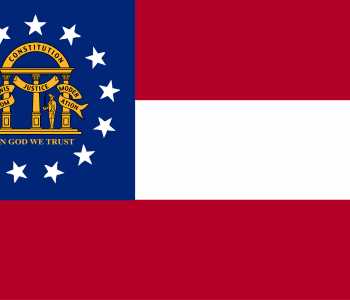How To Start An Online Boutique

If you have a knack for spotting the latest fashion trends, forming an online clothing store may be right for you. Give your online followers more than an Instagram photo or short-form TikTok videos. Today's customers want more from Influencers. So, offer them more than just snippets into the life of a fashionista.
Take your expressive clothing style and love of accessories to the next level. Invite followers to be part of a fashion experience by starting an online boutique store. You can even ask some audience members to be brand ambassadors or bloggers for your store.
Opening a new business boutique is a huge undertaking. But, if you have a passion for fashion, it can be a lot of fun and rewarding.
Online Boutique Business Overview
The online clothing business is much smaller than a retail clothing chain. Boutiques cater to a niche market, providing customers with high-quality products. They are often independently owned.
This business type is more selective in the goods they offer. They often carry less inventory than larger chain companies. Resulting in many feeling like they are gaining exclusive access to unique outfits. For customers, it is what makes online boutiques a desirable shopping experience.
The success of online boutiques depends on a thriving economy and high-end purchases. ECommerce sites are upfront about sustainability practices, shipping, and return options. It is what supports sales.
Correct sizing charts, visuals, shipping rates, and material details help decrease customer returns. By providing accurate content on the website, you can lower the risk of losing money due to returns.
How to Set Up an Online Boutique Store
As the boutique is not a brick-and-mortar store nor has a storefront, you must be creative to attract buyers. Potential customers cannot spot you while shopping in a mall or walking down the street.
Owning a successful online store means finding fresh methods to land new buyers. Thus, use social media, email marketing, and Google search to your advantage.
1. Choose a business name and entity.
When starting an online boutique store, owners must choose a business name and entity. Finding an available name can be challenging, but after some research, one can be found. It just takes time.
Search your state's online business database to ensure the business name is not in use. Also, check federal, state, and local trademark registrations. Learn whether your business name and logo are infringing on another's intellectual property.
Deciding whether you want to run a business alone or have a partner help determine which entity is best for you.
The four business entities to consider:
Sole proprietorship
Limited Liability Company (LLC)
Corporation
General partnership
It is best to consult a business attorney or tax professional for more details. They can offer guidance and help you choose the best business structure to operate.
Online boutique owners must also consider the business domain name. They need to find out if it is available for use, too. The domain name is the URL of the online store. It should be the same as the business name to avoid customer confusion.
2. Write a business plan.
The business plan for your online boutique will serve as an outline. Owners, stakeholders, and lenders often want to review the plan before loaning money.
The plan needs to include:
Executive summary
Company overview
Target audience
Market analysis and differentiators
Financial plan and goals
Expansion projections and revenue progressions
3. Online boutique costs
The costs of starting an online boutique are much less when compared to other business types.
Yet, startup costs do exist, including:
The website domain name and hosting costs
Ecommerce platform subscription (i.e., Shopify, Zazzle, etc.)
Inventory costs (varies based on products and suppliers)
Shipping rates
Marketing, advertising, and promotion costs
Registration and licensing fees (when applicable)
4. Decide on what to sell.
Online business owners need to decide on what apparel, accessories, or shoes to sell. Some may choose to sell various items, while others may focus on selling only one product type. Consider the needs of your target audience and if what your boutique sells will help meet them.
5. Choose the right eCommerce platform.
Once you know what products you will sell, select the right eCommerce platform for your store. Some eCommerce sites provide already-made products, while others allow for selling handmade ones.
When deciding on an eCommerce platform, consider pricing, labor, and shipping costs. Ensure the site is customizable and offers customer service. Make sure it is secure and provides customers with a user-friendly shopping experience.
6. Set up your online boutique
Make the introduction to your online boutique a memorable one.
Take these factors into consideration while building your store:
Website look, design, and color scheme
Easy navigation
Mobile-friendliness
Branding logo, mission statement, and values
Product listings, descriptions, and search engine optimization (SEO)
Check the shopping cart flow on several devices to ensure the proper functioning
Easy checkout process, shipping, and payment options.
7. Create store policies
Before launching your website, establish store policies and guidelines. It will give customers an understanding of how the boutique works and what to expect.
Outline shipping rates and providers. Provide an FAQ section to help customers find answers to frequently asked questions. Streamline the entire online shopping experience to entice them to become regulars.
8. Apply for business licenses or permits
Depending on the business type and location, you may need various licenses or permits. (i.e., a seller's permit, sales tax license, home occupation permit, etc.). The specific requirements for federal and state registration also vary.
If you are unsure which licenses and permits you need, refer to your:
Secretary of State website
Business bureau
Other local government organizations
9. Get an Employer Identification Number (EIN)
When applying for the different business licenses and permits, also get an EIN. An Employer Identification Number is your business tax ID. It is like a Social Security Number (SSN), but for businesses. Get your EIN online with the IRS in no time at all, and it has many benefits.
An EIN makes opening a business bank account and applying for credit cards simpler to do.
10. Get a business bank account and business credit cards.
Separating your business bank account and credit cards is essential for several reasons. You can keep better track of profits, expenses, and business taxes.
11. Apply for funding
When starting an online boutique, you will incur some costs that you need to cover upfront. The amount of funding you will need from lenders will vary.
Here are some options to get the money you need to start:
A business line of credit
Startup business loan
Purchase order financing
Ask friends and family
As these are only a few options, you may find other ways to finance your business that are a better fit. Make sure you have a business plan, good credit score, and money-saving options ready.
12. Create a marketing plan for your boutique
Every successful business has a marketing plan to reach potential buyers. Consider the different methods of marketing (i.e., Facebook paid campaigns, Google Ads, social media marketing, etc.). Then, decide which is best to use for targeting your audience.
If the strategy you choose does not pay off immediately, have patience. Set deadlines and goals to keep the marketing plan on track and to ensure effectiveness.
Conclusion
Go beyond showing the world your fashion style. Start a successful online boutique that makes your followers want to wear what you wear and buy what you are selling.






